by Trond R. Oskars
Many species and Biodiversity (1) as a whole is currently under a lot of pressure, not only climate change (2, 3, 4), but also increased direct interference by humans (5, 6, 7, 8, 9). This may lead to extinction events, severe shifts in species interactions and ecosystem composition (10, 11, 12). Due to this assessing current and past biodiversity and understanding their interactions and responses to stressors have become more important to try to predict the outcome of the ongoing human driven change of the biosphere (13, 14).
It is a known problem that there are large gaps in the fossil record (14), the older the rocks the bigger the chance that older fossils will not survive to be discovered and cannot be expected to match the diversity represented in more recent fossil assemblages (14, 15, 16). However the fossil record can still tell us a lot about long time stability of organism groups and ecosystems (14, 16), thus gives us the board picture of the effect of stressors comparable to human actions. However for a more detailed view we need data from living species (14).
Here we encounter an additional problem the lack of knowledge of extant species of many groups. About 1.2 to 1.9 million species have been formally described and given a name (17, 18). The number of species that currently exist in the world (not counting bacteria and their kin) varies by the method used, but is has been estimated as high as 8.7 million (18, 19). This leaves the majority (over 80%) of all species unknown or unnamed (20).
This opens for the possibility that species may fail to be recognized, discovered or described before being driven to extinction (13, 18). Even for relatively well known ecosystems (tropical forests) and well-studied animals (vertebrates; amphibians) there are likely still undiscovered species (18, 21, 22, 23, 24). This means that the number of undescribed species may be even higher for unexplored or inaccessible areas or taxa[1].
This also means that we in most cases know little about their roles in the ecosystem, how they interact with other species, and how the extinction may affect the ecosystem as whole.
Describing species takes a long time, averagely 21 years! (20). Much due to the shortage of taxonomists and that most species are rare and only represented by single specimens, leading to many researchers waiting until they have more specimens available[2] (20, 25). Museum collections are reservoirs of many undescribed species, sampled in bulk on long ago expeditions and many of which may already be extinct (20). Another factor is that most taxonomists don’t live in developing countries where Biodiversity is highest (20, 26). Many species can also be relatively well known by those who do live there (23), but have never been formally described or studied in other contexts. If no one has studied a species, how can we know if it is a common, widespread species or a group of similar endemic species? This is especially problematic in cases where their most well-known quality is that they are especially tasty with soy sauce (27*[3]).

How to get the impotance of proper taxonomy out to locals and legislator?
There is an additional dimension to this, what about the already described species? Does everybody agree on what a species is? (This is even further complicated by species concepts).
The problem is how we define what a species is, the method used, and the disagreement between these. Many taxonomists and sytematicists rely either on morphology or DNA to define species. Either they don’t trust one method, or they don’t have a choice, like paleontologists (28) or those researching cryptic species[4] (29).
However, In some cases convergent evolution[5] can make unrelated taxa that have some habits or habitats in common to seem closely related by morphology (30, 31) or populations that seem identical may in fact be evolutionary distinct (32) This may lead to conflict between methods and lead to bad taxonomy in the form of wrongful synonyms[6] (many taxa lumped into one) or undiscovered synonyms (one taxa counted as several). Mora et al. (18) asked 2938 taxonomists about what they felt could limit taxonomic effort[7], most answered synonyms as a major problem on the species level even if did not affect higher taxonomic levels drastically. So likely the general trends in taxa response to stressors can be trusted, but on the species level this resolution may be lacking.
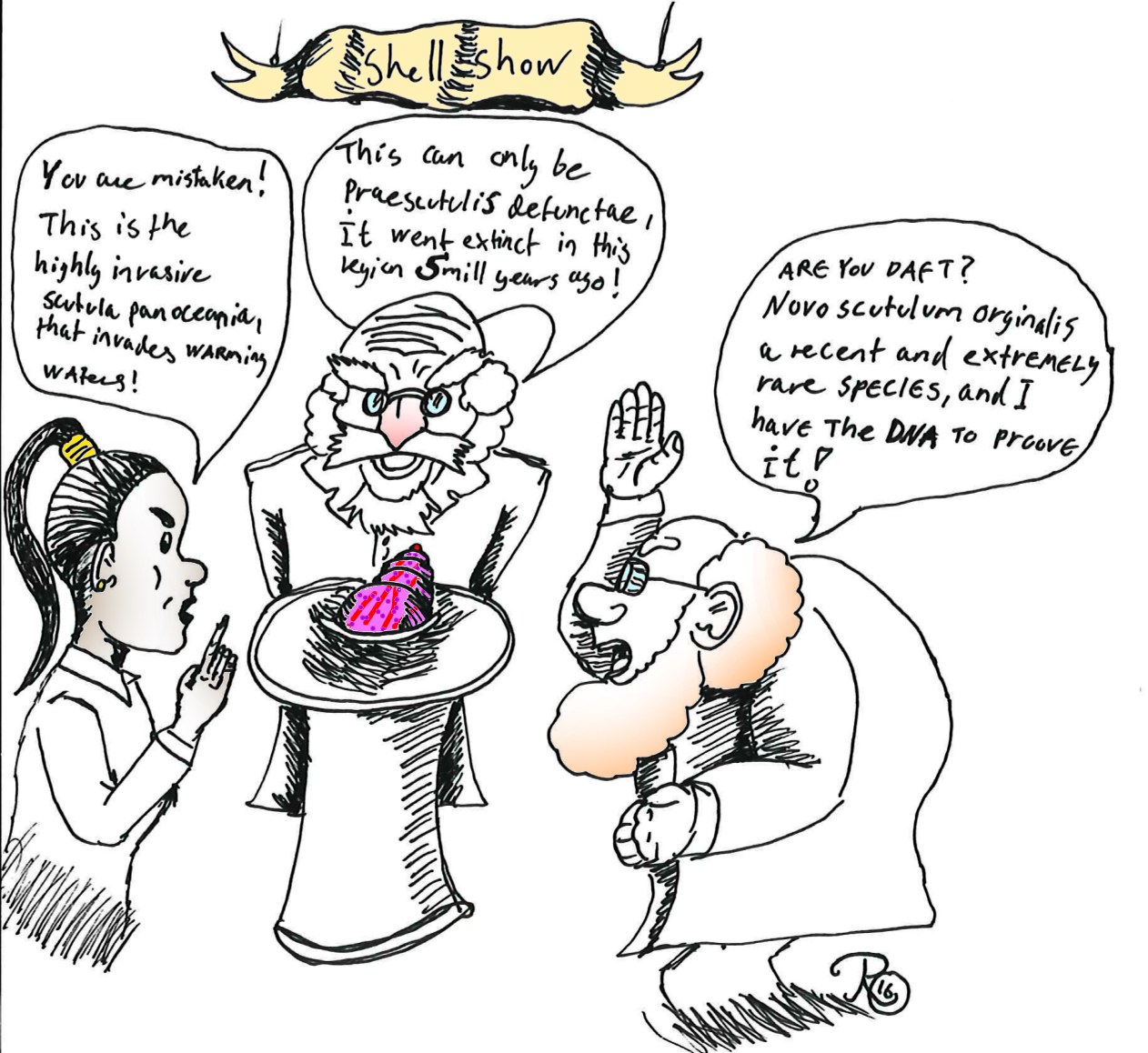
How to define speices can wary form disiplines to the methods used within the disiplines.
This can be highly problematic in conservation of Biodiversity and ecosystem services. A study by Prie et al. (33) on the freshwater clams Unio in Europe, found three distinct species and several distinct sub species based on DNA. This group is riddled with synonyms based on morphology, which has impacted the conservation status of the species, leading to some of the groups to be isolated and population reduced due to human activities (33).
This lack of knowledge is dangerous as it reduces our ability to conserve species or communities that may be potentially important for ecosystem function (24, 33, 34, 35). Additionally, if enough species are not properly recognized we cannot see the complete picture of biodiversity patterns or estimate extinction rates (21, 24). It also makes it difficult to transform the scientific data into information that can be used by legislators who decide on conservation and the people who actually live alongside the species (however some manage *).
We stand to lose important ecosystem processes and services that may in turn harm other species, or even come to affect human populations (21, 34, 36, 37). Basically we don’t really know what we have lost until it is gone. Due to this it would beneficial not only to protect areas that we know to be especially biodiverse, but also areas that are relatively unexplored or less disturbed by humans, as there are likely a high diversity of undescribed species there (24).
References
- Wilson, E. O. (1988). The current state of biological diversity. In Biodiversity, E.O. Wilson & F.M. Peters, (Eds). 3-18 PP. Washington, DC: National Academy Press. Accessed at http://www.ncbi.nlm.nih.gov/books/NBK219273/ at 20.02.16
- Walther, G. R., Post, E., Convey, P., Menzel, A., Parmesan, C., Beebee, T. J., et al., & Bairlein, F. (2002). Ecological responses to recent climate change. Nature, 416(6879), 389-395.
- Walther, G. R. (2010). Community and ecosystem responses to recent climate change. Philosophical Transactions of the Royal Society of London B: Biological Sciences, 365(1549), 2019-2024.
- Parmesan, C. (2006). Ecological and evolutionary responses to recent climate change. Annual Review of Ecology, Evolution, and Systematics, 637-669.
- Alongi, D. M. (2002). Present state and future of the world’s mangrove forests. Environmental conservation, 29(03), 331-349.
- Stuart, S. N., Chanson, J. S., Cox, N. A., Young, B. E., Rodrigues, A. S., Fischman, D. L., & Waller, R. W. (2004). Status and trends of amphibian declines and extinctions worldwide. Science, 306(5702), 1783-1786.
- Brook, B. W., Sodhi, N. S., & Bradshaw, C. J. (2008). Synergies among extinction drivers under global change. Trends in Ecology & Evolution, 23(8), 453-460
- Butchart, S. H., Walpole, M., Collen, B., Van Strien, A., Scharlemann, J. P., Almond, R. E, et al. & Carpenter, K. E. (2010). Global biodiversity: indicators of recent declines. Science, 328(5982), 1164-1168.
- Polidoro, B. A., Carpenter, K. E., Collins, L., Duke, N. C., Ellison, A. M., Ellison, J. C., et al. & Livingstone, S. R. (2010). The loss of species: mangrove extinction risk and geographic areas of global concern. PloS one, 5(4), e10095.
- Vitousek, P. M., Mooney, H. A., Lubchenco, J., & Melillo, J. M. (1997). Human domination of Earth’s ecosystems. Science, 277(5325), 494-499.
- Chapin III, F. S., Zavaleta, E. S., Eviner, V. T., Naylor, R. L., Vitousek, P. M., Reynolds, H. L., et al. & Mack, M. C. (2000). Consequences of changing biodiversity. Nature, 405(6783), 234-242.
- Van der Putten, W. H., Macel, M., & Visser, M. E. (2010). Predicting species distribution and abundance responses to climate change: why it is essential to include biotic interactions across trophic levels. Philosophical Transactions of the Royal Society of London B: Biological Sciences, 365(1549), 2025-2034.
- Stork, N. E. (1993). How many species are there?. Biodiversity & Conservation, 2(3), 215-232.
- Blois, J. L., Zarnetske, P. L., Fitzpatrick, M. C., & Finnegan, S. (2013). Climate change and the past, present, and future of biotic interactions. Science, 341(6145), 499-504.
- Raup, D. M. Taxonomic diversity during the Phanerozoic. Science 177, 1065–1071 (1972).
- Benton, M. J., Wills, M. A., & Hitchin, R. (2000). Quality of the fossil record through time. Nature, 403(6769), 534-537.
- Chapman, A. D. Numbers of living species in Australia and the world. (2009): 1-78 PP. Report for the Australian Biological Resources Study. Canberra, Australia. Available form https://www.environment.gov.au/system/files/pages/2ee3f4a1-f130-465b-9c7a-79373680a067/files/nlsaw-2nd-complete.pdf accessed on 20.02.16.
- Mora, C., Tittensor, D. P., Adl, S., Simpson, A. G., & Worm, B. (2011). How many species are there on Earth and in the ocean?. PLoS Biol, 9(8), e1001127.
- May, R. M. (2011). Why worry about how many species and their loss?. PLoS Biol, 9(8), e1001130.
- Fontaine, B., Perrard, A., & Bouchet, P. (2012). 21 years of shelf life between discovery and description of new species. Current Biology, 22(22), R943-R944.
- Ceballos, G., & Ehrlich, P. R. (2009). Discoveries of new mammal species and their implications for conservation and ecosystem services. Proceedings of the National Academy of Sciences, 106(10), 3841-3846.
- Geissmann, T., Lwin, N., Aung, S. S., Aung, T. N., Aung, Z. M., Hla, T. H., Grindley, M., Momberg, F. (2011). A new species of snub‐nosed monkey, Genus Rhinopithecus Milne‐Edwards, 1872 (Primates, Colobinae), from northern Kachin State, northeastern Myanmar. American Journal of Primatology, 73(1), 96-107.
- Hart, J. A., Detwiler, K. M., Gilbert, C. C., Burrell, A. S., Fuller, J. L., Emetshu, M., Hart, T. B., Vosper, A., Sargis, E. J, Tosi, A. J. (2012). Lesula: a new species of Cercopithecus monkey endemic to the Democratic Republic of Congo and implications for conservation of Congo’s Central Basin. PLoS One, 7(9), e44271.
- Giam, X., Scheffers, B. R., Sodhi, N. S., Wilcove, D. S., Ceballos, G., & Ehrlich, P. R. (2012). Reservoirs of richness: least disturbed tropical forests are centres of undescribed species diversity. Proceedings of the Royal Society of London B: Biological Sciences, 279(1726), 67-76.
- Lim, G. S., Balke, M., & Meier, R. (2012). Determining species boundaries in a world full of rarity: singletons, species delimitation methods. Systematic biology, 61(1), 165-169.
- Gaston, K. J., May, R. M.(1992). Taxonomy of taxonomists. Nature, 356, 281-282.
- Lim K. K. P., Murphy D. H, Morgany, T., Sivasothi, N.,Ng P. K. L. Soong, B. C.,. Tan, H. T. W, Tan, K. S., Tan, T. K. A (1999) Guide to Mangroves of Singapore Peter K. L. Ng and N. Sivasothi (ed). BP Guide to Nature Series published by the Singapore Science Centre, sponsored by British Petroleum. Raffles Museum of Biodiversity Research, The National University of Singapore & The Singapore Science Centre. Online excerpt: http://mangrove.nus.edu.sg/guidebooks/text/2088.htm accessed on 19.02.16
- Kaiser, G., Watanabe, J., & Johns, M. (2015). A new member of the family Plotopteridae (Aves) from the late Oligocene of British Columbia, Canada. Palaeontologia Electronica, 18(3), 1-18
- Jörger, K. M., & Schrödl, M. (2013). How to describe a cryptic species? Practical challenges of molecular taxonomy. Frontiers in Zoology, 10(1), 1.
- May, R. M. (1990). Taxonomy as destiny. Nature, 347(6289), 129-130.
- Oskars, T. R., Bouchet, P., & Malaquias, M. A. E. (2015). A new phylogeny of the Cephalaspidea (Gastropoda: Heterobranchia) based on expanded taxon sampling and gene markers. Molecular phylogenetics and evolution, 89, 130-150.
- Hebert, P. D., Penton, E. H., Burns, J. M., Janzen, D. H., & Hallwachs, W. (2004). Ten species in one: DNA barcoding reveals cryptic species in the neotropical skipper butterfly Astraptes fulgerator. Proceedings of the National Academy of Sciences of the United States of America, 101(41), 14812-14817.
- Prié, V., Puillandre, N., & Bouchet, P. (2012). Bad taxonomy can kill: molecular reevaluation of Unio mancus Lamarck, 1819 (Bivalvia: Unionidae) and its accepted subspecies. Knowledge and Management of Aquatic Ecosystems, (405), 08.
- Suzán, G., Marcé, E., Giermakowski, J. T., Mills, J. N., Ceballos, G., Ostfeld, R. S., Armien, B,. Pascale, J. M.,Yates, T. L. (2009). Experimental evidence for reduced rodent diversity causing increased hantavirus prevalence. PloS one, 4(5), e5461
- Mace, G. M. (2004). The role of taxonomy in species conservation. Philosophical Transactions of the Royal Society of London B: Biological Sciences, 359(1444), 711-719.
- Worm, B., Barbier, E. B., Beaumont, N., Duffy, J. E., Folke, C., Halpern, B. S.,. Jackson J. B. C, Lotze, H. K., Micheli, F., Palumbi, S. R., Sala, E., Selkoe, K. A., Stachowicz, J. J., Watsom, R. (2006). Impacts of biodiversity loss on ocean ecosystem services. Science, 314(5800), 787-790.
- Dugan, P. J., Barlow, C., Agostinho, A. A., Baran, E., Cada, G. F., Chen, D., et al. & Marmulla, G. (2010). Fish migration, dams, and loss of ecosystem services in the Mekong basin. Ambio, 39(4), 344-348.
[1] Taxa- A group of individuals or species that due to one or several methods are seen my Taxonomists or sytematicists to form one discernable unit and given a name.
[2] I have more than once spent two whole days dissecting a specimen less than 1 mm long as it was the only one available.
[3] I am revising the taxonomy of this group, current knowledge is next to none.
[4] Cryptic species- A species that is molecular distinct, but more or less impossible to separate form related species based on morphology.
[5] Convergent evolution- When evolution drives two species that are unrelated to gain a similar morphology, for example due to living in a similar habitat, also possible for related, but not closely related species trough parallel evolution.
[6] Synonymy- Basically when one taxa is regarded as the same as another and the most recent name must be replaced by the oldest available name.
[7] Taxonomic effort- Species discovery rates and to some degree the number of taxonomist working on a group (18).
By Marie Danielsen
There is a lot of attention towards the current climate change and how this affects biodiversity worldwide, but have you ever stopped to think about how your glamorous holiday getaway could harm biodiversity?
WHY SHOULD YOU CARE?
Some of the most vulnerable species we have on this planet are also some of the most popular animals for tourists to interact with when on holiday.
This means that vulnerable and endangered species are being caught in the wild to provide for the ever-growing demand set by us, the tourists.
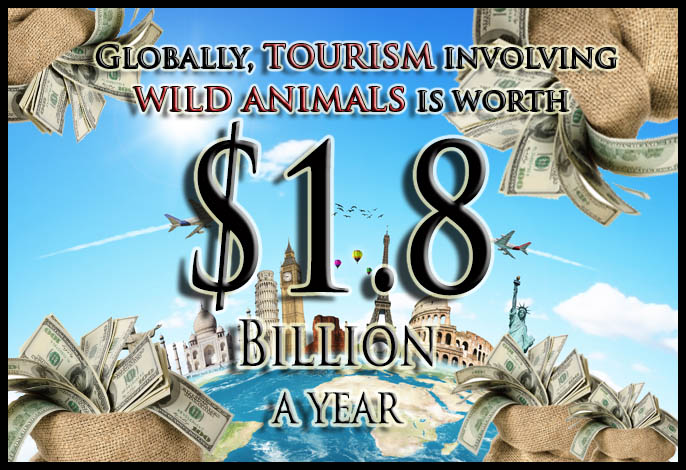
Picture: by author
Tourism isn’t necessary always bad for biodiversity, it can be a beneficial through developing conservation areas like national parks and reserves focusing on conserving species, not entertaining tourists or earning money.
The clue for us, the travelling and exploring generation, is to avoid the tourist attractions that do more harm than good.
When out travelling, local venues will give you the opportunity to ride an elephant, walk with lions or even get some great selfies with a tiger cub. You could have the time of your life while visiting these venues and getting close and personal with the animals, but what most people might not realize is that a “once in a lifetime” photo means a lifetime of misery for the animal involved.
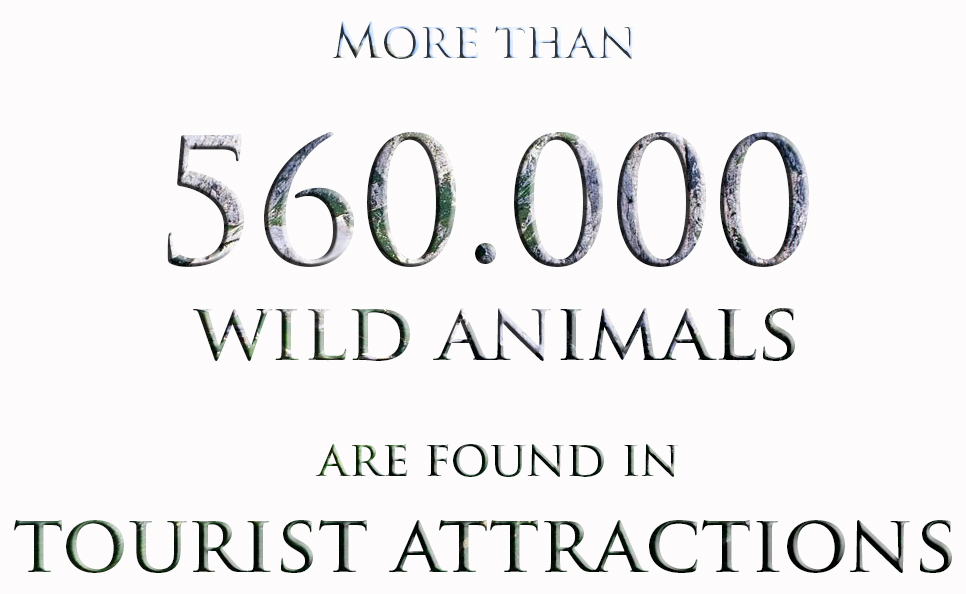
Picture: by author
DO NOT BLINDLY TRUST TOURIST REVIEWS

Picture: by author. When people leave reviews on Tripadvisor, they’re mainly all positive even if animal cruelty is found. This goes to show that people are not aware of the cruelty behind the scenes.
The World Animal Protection recently published a comprehensive report highlighting the gruesome and hidden story behind wildlife tourism, uncovering that over half a million animals suffer due to irresponsible tourist attractions.
It is difficult to know if the venue you visit as a tourist inflicts cruelty on animals, but chances are that it does. Welfare or conservation abuse is found in 3 out of 4 attractions
The problem with tourists being uninformed is reflected on reviews found on travel and holiday web pages like Tripadvisor, the largest online tourist review site in the world, which results in new tourists making the same mistake as the ones before them.
Pages like Tripadvisor should take action against animal abuse and flag any tourist attractions with claims of animal cruelty in order to make it easier for travelers to avoid such venues.
The irony is that those participating in activities that harm animals are often those who love animals and wish to make fun memories with them.
When informed about the suffering involved, tourists are no longer interested in taking part in the activities offered.
This shows how important it is to inform people about what is going on.
WHAT CAN I DO?

This post will provide a summary of the World Animal Protection report regarding animal cruelty, and give you a top 10 list of what to avoid when out travelling.

Contrary to what most people might think, elephants are one of the most dangerous animals to handle and are therefore forced through a horrible training process (known as the “crush”) from a very young age.
This training process involved tying the animal in chains or ropes in a small cage, making it impossible for the animal to move, while inflicting the animal with pointed metal bull hooks to establish dominance. The animal is only allowed to move whenever the person in charge commands, and this process continues for up to a week, making sure to break the spirit of the animal so that they will accept people riding on their back.
For the rest of their adult lives, the elephants are prevented from forming natural social relationships with each other, often chained in small enclosures when they are not taking tourists for a walk. These animals are given little veterinary care and can suffer for a long time before being put down.
There are no such thing as happy, free elephants giving humans a ride – they all go through a process of mental breakdown in order to be taught submission and obedience.
Large travel companies around the world are now banning elephant rides as part of their holiday deals, some of them being Apollo, World Expeditions, TUI Nederland, Interpid Travel and Albatros Travel.



Picture: by author. IUCN list info (press picture)
Tiger cubs are taken from their mothers at the youngest age possible so that they can be used as props for people wanting a great selfie.
They are handled and hugged by tourists all day long, being drugged to keep calm, and then kept chained in small cages the rest of the day.
To make sure the tiger cubs can’t do any real harm, they will have their sharper teeth pulled out as well as claws removed, both of which are extremely painful procedures.
While many attractions claim to be sanctuaries, any place planning to release animals back into the wild would not allow them to be handled by the public, especially tourists, as they would not survive in the wild.


As with tigers, lion cubs are bred and taken away from their mothers within a month of birth. While they are still rather small in size, the cubs are being handled by tourists that wants to pose for photos and are hit if they show any signs of aggressive or unwelcome behavior.
As they get older and grow too big to be picked up or handled by tourists they are used in a rather new tourist experience: walking with lions. Here the lions are trained to walk with tourists, being punished if they misbehave, and face a lifetime in captivity as they are not capable of living on their own in the wild.
There is, unfortunately, a larger tourist marked for lion cubs than for adult ones, opening up for another marked: canned hunting, which you can read more about here.


In bear parks, the bears are kept in sterile “pits” in great numbers, having little to no behavioral enrichment.
Bears are mainly solitary animals in the wild, and so gathering several of them together in a small enclosure usually leads to a lot of fighting and nasty injuries.
Living in large groups and being exposed to a lot of stress increase the susceptibility to diseases caused by bacterial infections, and bears can be sick for a long time before receiving any medical treatment.
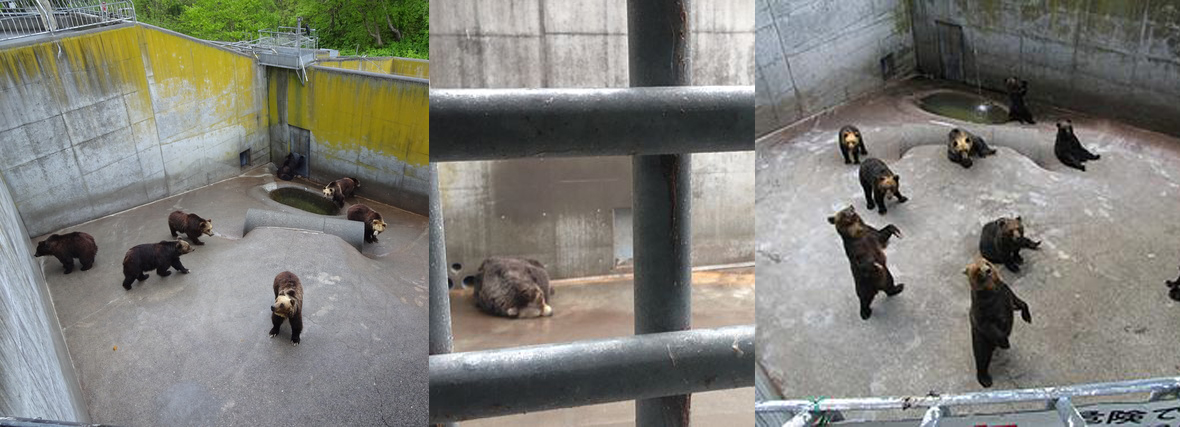

There is only one remaining sea turtle farm in the world which allows for tourists to handle turtles and even eat them during their visit, and that is in the Cayman Islands.
When handled by tourists, turtles often panic and intensively flap their flippers, causing fractures and detached claws. They are also under a great deal of stress which weaken their immune system and thus increase their susceptibility to diseases.
As most people don’t know how to handle them, many tourists accidentally drop the struggling sea turtles resulting in serious injuries or death
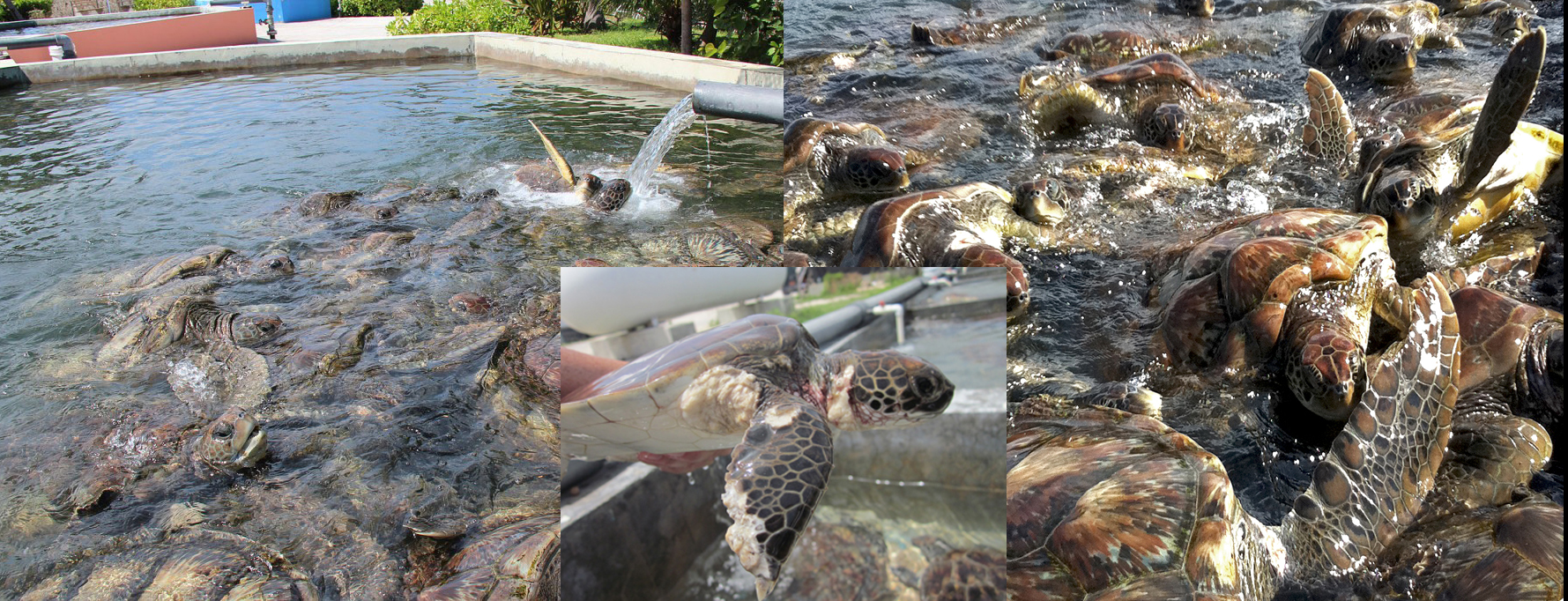

When catching dolphins, high speed boats usually chase a group of individuals before hauling on board some of the most desired ones (usually a certain size or color), even catching them in nets. Usually, the stress is too much for the dolphins to handle and they die during the transportation.
The dolphins, whether they are born in captivity or caught in the wild, face a lifetime of suffering. Their pool is usually the size of a swimming pool which is often treated with chlorine, thus causing painful irritations to the eyes and skin
They also suffer from sunburns, as they are unable to escape to waters deep enough to avoid the strong UV lights.
Dolphins have a highly tuned echolocation which is used for navigation in the wild, but is interfered with by the flat walls of the pool, making it impossible to navigate as they would in the wild. Many dolphins die of stress-related illnesses such as gastric ulcers and heart attacks.
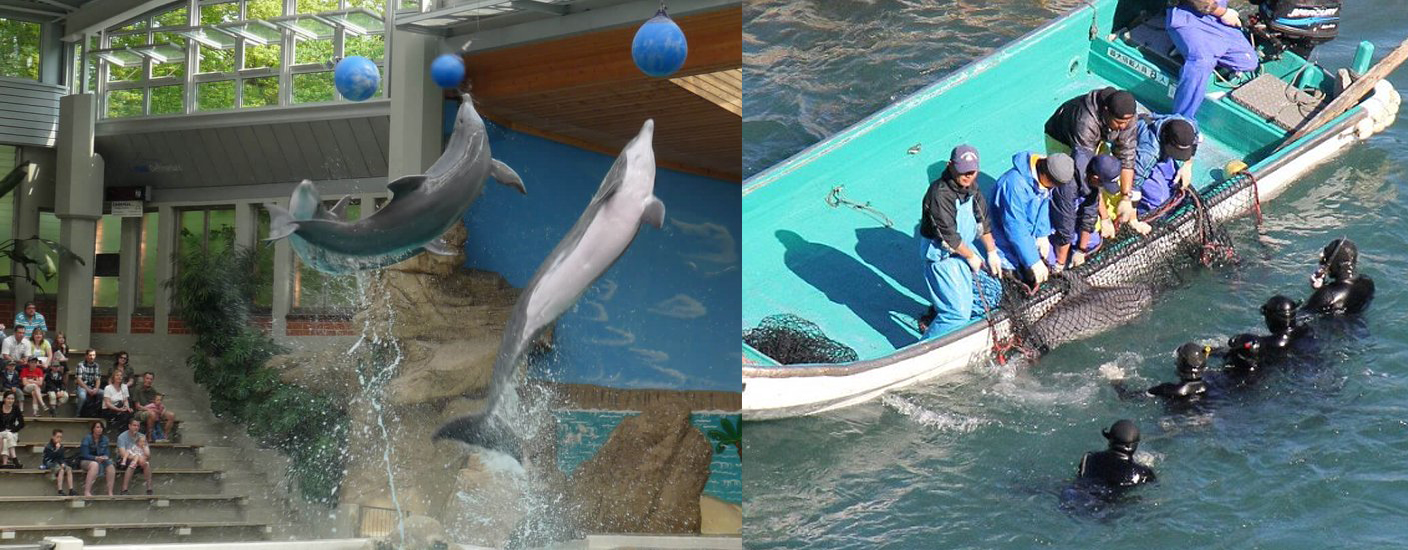

There are many different species of primates being used for street entertainment, the largest group of species being macaques. They are trained in an aggressive and painful way to make them act more human-like, by walking on two feet and dancing or performing tricks for groups of tourists.
The macaques are often equipped with a collar and chain when caught as young, and as they grow the chain becomes more embedded in the skin leading to painful wounds, infections and sometimes death.
When they are not performing, the animals are kept chained up in small cages in groups, or outside on short chains.


Civets in the wild eat coffee cherries and excrete the coffee bean within the cherry in pellets. This has then been collected in the wild to make civet coffee from the excreted bean and is a luxury coffee selling for over 500 NOK ($100) for one cup.
The pellets used to be collected in the wild, but as the tourist demand for this luxury coffee increased, locals started catching civets from the wild and keeping them in small, crowded cages. Here the civets are force fed coffee cherries in large quantities and suffer both nutritional and physical injuries.
As civet coffee has become a growing tourist industry, “farmers” of the coffee have started giving tours around the plantations, resulting in more and more civets being caught, caged and abused.


Snake charming is an old street entertainment usually involving cobras.
The latest twist on this old tourist attraction is to let tourists kiss the cobra to get some unique holiday photos.
Cobras are caught in the wild, defanged with metal pliers and have their venom ducts either removed completely or blocked. This is done without any sanitary equipment, often resulting in deadly infections.
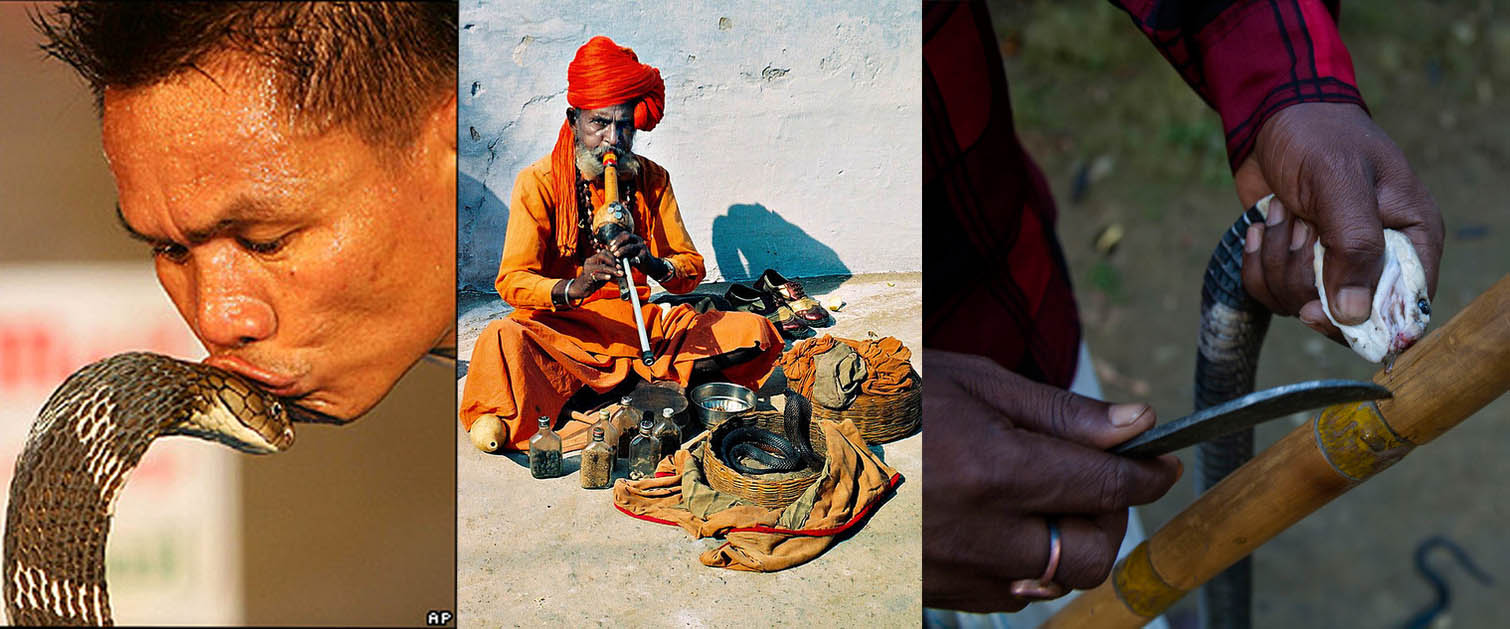

A large number of crocodile farms are providing the fashion industry with skins, and these farms are becoming a larger part of the tourist industry giving tourists an opportunity to come see the animals and also eat them in on-site restaurants.
Crocodiles are usually kept in concrete pits, with these pits being filled to the rim, and are so unhygienic and appalling that the conditions alone often are enough to kill the crocodiles. As they are very sensitive to stress, their immune system can decrease to such an extent that they are unable to fight off infections and thus fatal diseases develop.
As the pits are severely overcrowded there is a limited availability for food and water and the crocodiles will often fight each other to the death or severely injure each other which eventually kills them too.

It might seem a bit depressing reading through this list, but if you’ve read this far, make sure to read the rest.
There are some places you can go to get the ultimate wildlife experience without having to feel bad for doing so

BORNEO ORANGUTAN SURVIVAL FOUNDATION (BOSF):
Samboja Lestari Eco-Lodge

BOSF is a leading orangutan rescue organisation located in Indonesa that takes in and cares for orangutans who have been used in the entertainment industry, kept illegally as pets, been orphaned in the wild or lost their habitat.
They have rescued over 2200 orangutans since they started in 1991 and provide care and rehabilitation for around 700 individuals.
Sadly, most of the orangutans can never bee returned back into the wild due to old age, disabilities or other illnesses, but the ultimate goal is to release as many individuals back into the wild as possible.
As a tourist you get to stay at the Eco-lodge nestled in a 1.850 hectare reserve for regenerating rainforest, where the permanent orangutan residents live. You can also work as a volunteer and make behavioral enrichment devices, collecting observational data or prepare their food.
To read more about BOSF click here.

THE ROMANIAN BEAR SANCTUARY

Bears were once caught as cubs to illegally keep in small cages in venues such as petrol stations and restaurants as a way to entertain and attract customers.
The Romanian Bear Sanctuary is a safe haven for these former captive bears, where they can live in semi-natural conditions in large enclosures of around 30 hectares.
Tourists can get guided tours around the sanctuary to view the bears while being educated about the problems of captive bears used in entertainment. There are strict rules as to how to behave while in the sanctuary.
You leave the sanctuary with a sense of appreciation for these wild animals as well as a true wildlife experience.
Read more about the bear sanctuary here.
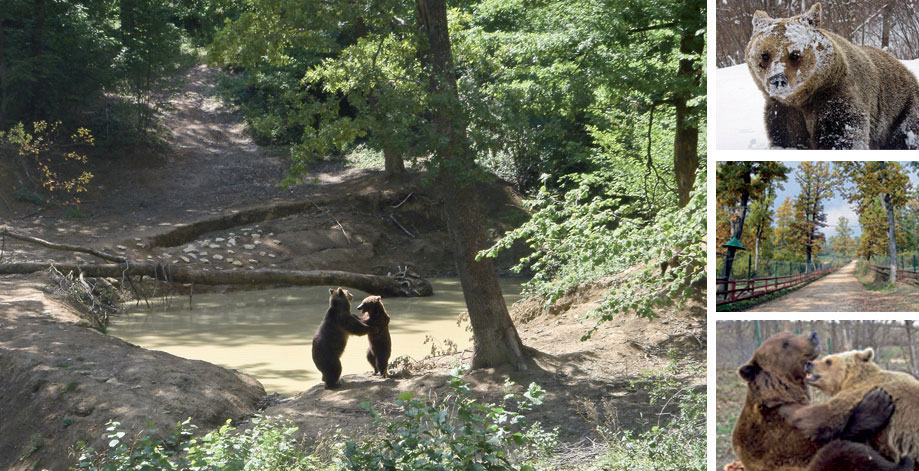
SOME QUESTIONS TO ASK YOURSELF WHEN TRAVELLING
It might still be hard to know if the attraction you want to visit is animal friendly or not. There is a travel guide providing great tips for how to be animal friendly when out travelling, which is found here.
You could also ask yourself some simple questions:
- Does this animal have food and water?
- Is there rest and shelter for the animals?
- Is the animal in pain and suffering?
- Are you observing «natural behaviour» or is it cruelty?
- Will I see animals in distress?
- Am I allowed to interact with the animals?
- Are they breeding more animals?
- What happens to the animals when you leave?
WHAT SHOULD YOU DO?
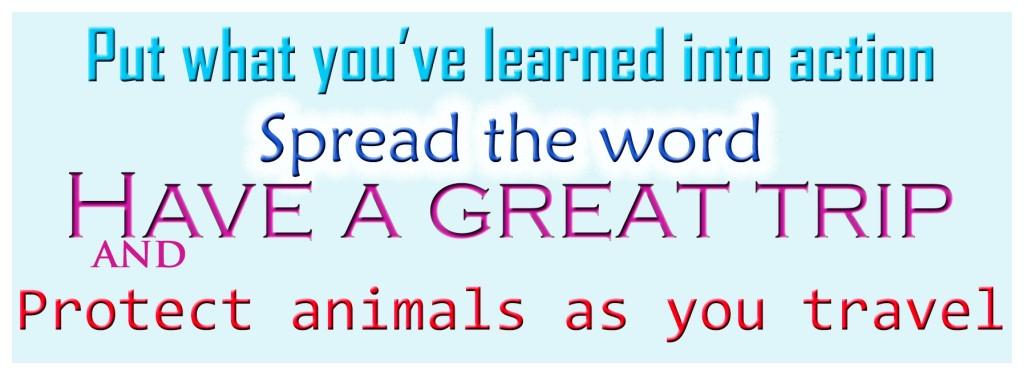
Picture: by author
Sources:
Information about the top 10 list: The full report can be read here (Accessed on the 11.02.2016)
Information about animals in tourism:
Hall, C. (2010). Tourism and biodiversity: more significant than climate change?. Journal of Heritage Tourism, 5(4), pp.253-266.
Moorhouse, T., Dahlsjö, C., Baker, S., D’Cruze, N. and Macdonald, D. (2015). The Customer Isn’t Always Right—Conservation and Animal Welfare Implications of the Increasing Demand for Wildlife Tourism. PLOS ONE, 10(10), p.e0138939.
Newsome, D., Dowling, R. and Moore, S. (2005). Wildlife tourism. Clevedon: Channel View Publications.
http://www.abc.net.au/news/2016-02-04/elephant-rides-dancing-monkeys-cruellest-tourist-attractions/7139316 (17.02.16)
Tourists view on tourist attractions with animals:
http://news.nationalgeographic.com/2015/10/151021-tourism-wildlife-welfare-conservation/ (17.02.16)
- Riding elephants
Information about «the crush»: https://journals.worldnomads.com/responsible-travel/story/81053/Thailand/Why-Elephant-Riding-Should-Be-Removed-from-Your-Bucket-List (11.02.16)
Pictures (from left to right):
http://www.alternativeway.net/blogs/activism-stories-from-the-web-worth-reading/7644599-elephant-cruelty-in-thailand (21.02.16)
http://www.balinatatour.com/elephant-ride (09.02.16)
https://jennasconservation.wordpress.com/2015/09/23/i-want-to-ride-an-elephant/ (21.02.16)
- Tiger seflies:
About tiger selfies: http://www.theguardian.com/travel/2014/jul/29/wiildlife-charity-calls-for-end-tiger-selfies (20.02.16)
https://www.thedodo.com/tiger-cub-captivity-selfies-1191868858.html (20.02.16)
Information about IUCN red list: http://www.iucnredlist.org/details/15955/0
Pictures (from left to right):
https://s-media-cache-ak0.pinimg.com/736x/ae/fe/d1/aefed1851427df5c206fee601cd406d6.jpg (Accessed 14.02.16)
http://news.yahoo.com/blogs/omg/khloe-kardashian-sparks-outrage-photo-herself-with-tiger-cub-054448769.html (Accessed 20.09.2015)
http://www.independent.co.uk/life-style/love-sex/why-guys-are-posing-with-tigers-in-their-tinder-pictures-and-why-it-wont-get-them-any-more-dates-9573833.html (Accessed 21.02.16)
- Walking with lions:
Lion hunting: http://www.bloodlions.org/ (12.02.16)
Pictures (left to right)
https://lionexploitation.wordpress.com/author/louisesanwild/page/3/ (18.02.16)
- Visiting bear parks
Pictures (left to right)
http://www.huffingtonpost.co.uk/georgina-allen/japans-notorious-bear-par_b_7865226.html (14.02.16)
http://www.wildwelfare.org/#!japan/ccma (14.02.16)
http://www.wildwelfare.org/#!untitled/zoom/mainPage/c6l0 (14.02.16)
- Holding sea turtles
http://advocacy.britannica.com/blog/advocacy/2015/11/one-of-the-worlds-cruellest-tourist-attractions/ (15.02.16)
Pictures (left to right)
http://www.hsi.org/issues/wildlife_trade/facts/farming_sea_turtles.html?referrer=https://www.google.no/ (15.02.16)
http://www.conserveturtles.org/pressreleases.php?page=n_CaymanTurtleFarm2012 (15.02.16)
http://www.paxgaea.com/CaymanIslands.html (15.02.16)
- Performing dolphins
http://www.bornfree.org.uk/campaigns/zoo-check/captive-whales-dolphins/ (18.02.16)
Pictures (left to right)
http://us.whales.org/wdc-in-action/captivity (18.02.16)
http://www.dailymail.co.uk/news/article-2257426/The-dolphin-snatchers-Mail-investigation-exposes-vile-trade-animals-sold-100-000-aquariums-suffer-unimaginable-cruelty.html (12.02.16)
- Dancing monkeys
Pictures (left to right)
http://www.dailymail.co.uk/news/article-2174350/Topeng-Monyet-Shocking-pictures-cruel-treatment-monkeys-forced-wear-masks-ride-tiny-bicycles.html (12.02.16)
http://www.care2.com/news/member/357545291/3577555 (12.02.16)
- Touring civet coffee plantations
Pictures (left to right)
http://www.earthisland.org/journal/index.php/elist/eListRead/the_truth_behind_that_crappy_cup_of_coffee/ (18.02.16)
https://projectluwaksg.wordpress.com/tag/common-palm-civet/ (18.02.16)
http://www.theguardian.com/environment/2012/nov/19/civet-coffee-abuse-campaigners (18.02.16)
- Charming snakes and kissing cobras
Pictures (left to right)
http://scienceblogs.com/corpuscallosum/2006/10/07/snake-kissing/ (21.02.16)
http://whataboutproject.com/our-friends/bangladesh/snake-charmers (21.02.16)
http://handluggageonly.co.uk/2016/01/26/heres-a-really-important-thing-you-need-to-know-about-snake-charming/ (21.02.16)
- Farming crocodiles
Pictures (left to right)
http://www.crocodileadventures.com/farm.html (22.02.16)
http://bassiounigroup.com/uncategorized/zimbabwes-crocodile-farms-lucrative-investment (22.02.16)
http://www.chiangraitimes.com/dozens-of-crocodiles-escape-in-pattaya.html (22.02.16)
Thanks for reading!
Marie Danielsen
































